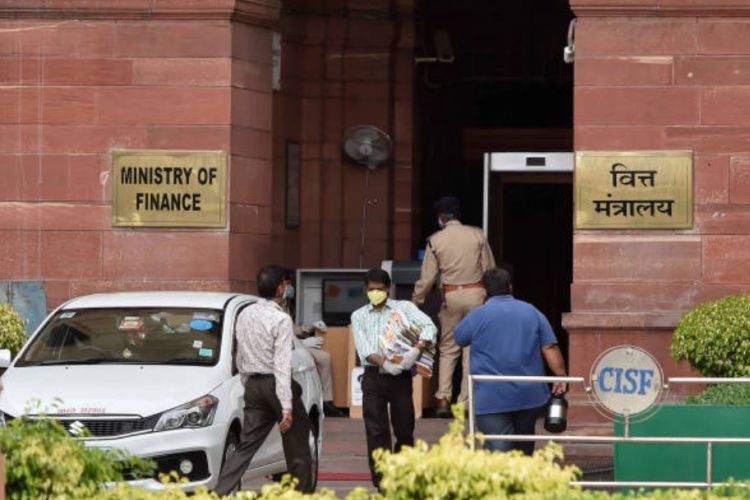The debate over tax devolution to Indian states has intensified in recent months, with several state governments openly challenging the Union government’s fiscal policies. Tamil Nadu, Odisha, and Telangana, among others, have called for a revision in the tax-sharing formula, citing an unfair allocation of resources. At the heart of the controversy is the growing reliance of the Centre on cesses and surcharges, which are not included in the divisible tax pool, effectively reducing the funds available for states.
With the 16th Finance Commission expected to revisit the devolution formula, this issue has become a flashpoint in Centre-state relations. Ensuring a more equitable distribution of resources is not just about federal fairness—it is essential for India’s long-term economic growth. This article examines why an increase in states’ share of tax revenues is crucial and how the current system is impeding progress.
READ | Food security: India’s focus must shift to nutritional security
Rising financial burden on states
The introduction of the Goods and Services Tax (GST) in 2017 significantly reduced states’ autonomy over taxation. Previously, states collected around 55% of total tax revenues, including VAT, entry tax, and other local levies. Now, GST revenue is collected centrally and distributed according to Finance Commission formulae, increasing states’ dependence on the Union government. Additionally, with the GST compensation period ending in 2022, states have struggled to make up for lost revenue.
States are primarily responsible for critical public services such as healthcare, education, and rural development. Their share of total government expenditure has risen from 52% in 2014-15 to approximately 63% in 2022-23, reflecting the growing demand for services. The COVID-19 pandemic further exacerbated this fiscal stress, forcing states to increase health expenditures without corresponding increases in tax devolution.
Imbalance in the tax devolution mechanism
The 14th Finance Commission (2015-20) recommended increasing states’ share in the divisible pool from 32% to 42%, but the 15th Finance Commission reduced this to 41%, citing Jammu & Kashmir’s reorganisation. However, the effective share states receive is much lower due to the rising use of cesses and surcharges.
The Union government has increasingly relied on cesses and surcharges, which are not part of the divisible tax pool. In 2014-15, revenue from these sources accounted for 10% of gross tax revenue; by 2023-24, this had risen to 27%. As a result, while the official devolution rate is 41%, the effective share of states is closer to 29-30%.
With the loss of VAT and other indirect taxes post-GST, states rely primarily on state GST (SGST) which is shared under the GST formula; excise on fuels, liquor, stamp duty, vehicle tax, and property tax—relatively inelastic revenue sources. The Centre retains control over direct taxes, corporate tax, customs duty, and GST administration, increasing states’ dependency.
Rising state debt levels
Due to increased spending needs and limited revenue sources, states have been forced to borrow more. The state government debt-to-GDP ratio has increased from 22% in 2013-14 to 32% in 2023-24. According to the RBI, states like Punjab (48.2%), Rajasthan (39.8%), and Kerala (37%) face unsustainable debt burdens.
The Union government mandates that states co-finance centrally sponsored schemes such as PMAY, PM-KISAN, and Ayushman Bharat. The Centre-state funding ratio for many schemes has shifted from 70:30 to 60:40, increasing states’ financial burden without giving them adequate decision-making power.
Case for a fairer revenue sharing
The upcoming 16th Finance Commission should increase states’ share in the divisible tax pool from 41% to at least 45%, if not 50%. Additionally, cesses and surcharges should be merged into the divisible pool to prevent the Centre from circumventing tax devolution obligations.
States should be granted more taxation rights within the GST framework, such as the ability to levy additional surcharges on luxury goods and services. Furthermore, the GST compensation mechanism should be reinstated for another five years to stabilise state revenues.
The Centre should reduce state contribution requirements for centrally sponsored schemes, allowing states to have greater control over resource allocation. A formula-based grant system should replace discretionary allocations to ensure more predictable revenue flows.
States that contribute the most to India’s GDP, such as Maharashtra, Karnataka, Gujarat, and Tamil Nadu, often receive disproportionately lower transfers per capita. Additionally, southern states argue they are penalised due to lower fertility rates since Finance Commission allocations factor in population size. To address these concerns, the 16th Finance Commission should revise the weightage of population in tax devolution formulas to ensure a fairer distribution of resources.
Indian states are the primary drivers of economic growth and public service delivery, yet they face increasing financial constraints due to the shrinking share of tax devolution and rising reliance on cesses and surcharges by the Union government. A more equitable revenue-sharing framework is necessary to empower states and sustain India’s growth trajectory.
Key reforms should include increasing states’ share in the divisible tax pool from 41% to 45-50%, merging cesses and surcharges into the divisible pool, reinstating GST compensation for five more years, allowing states greater taxation autonomy, and reducing states’ financial burden for centrally sponsored schemes.
Ensuring fiscal justice for states is not just about fairness—it is essential for fostering balanced regional development and sustaining India’s long-term economic ambitions.

